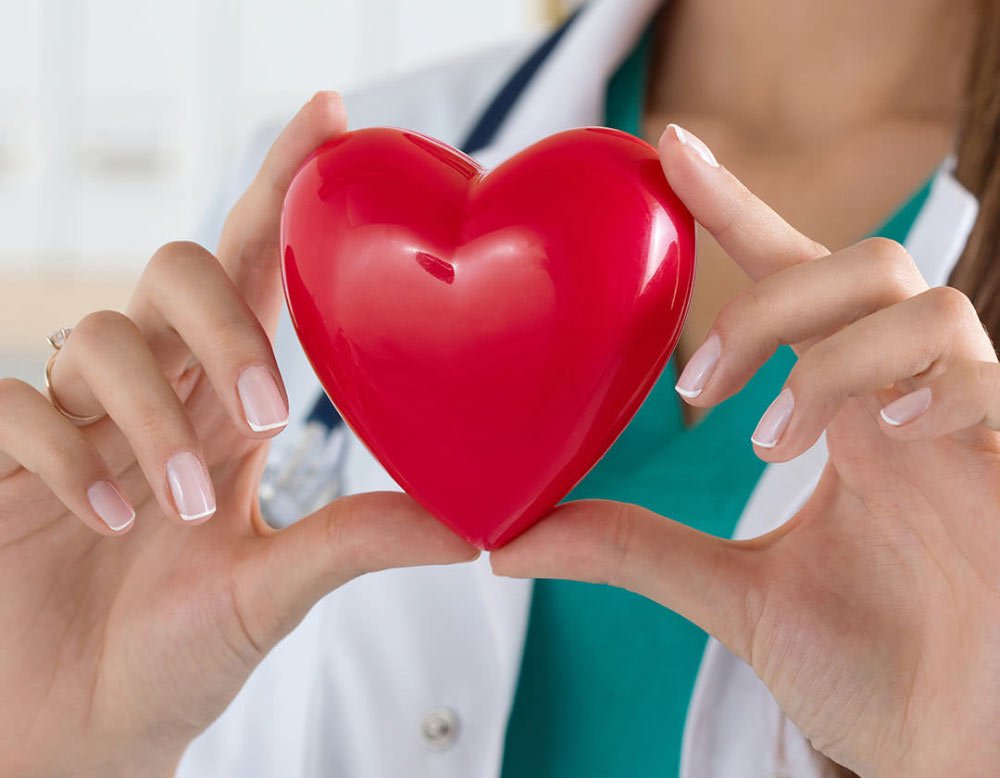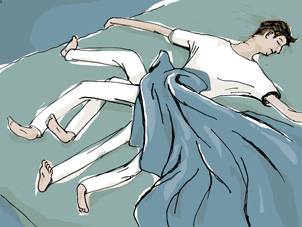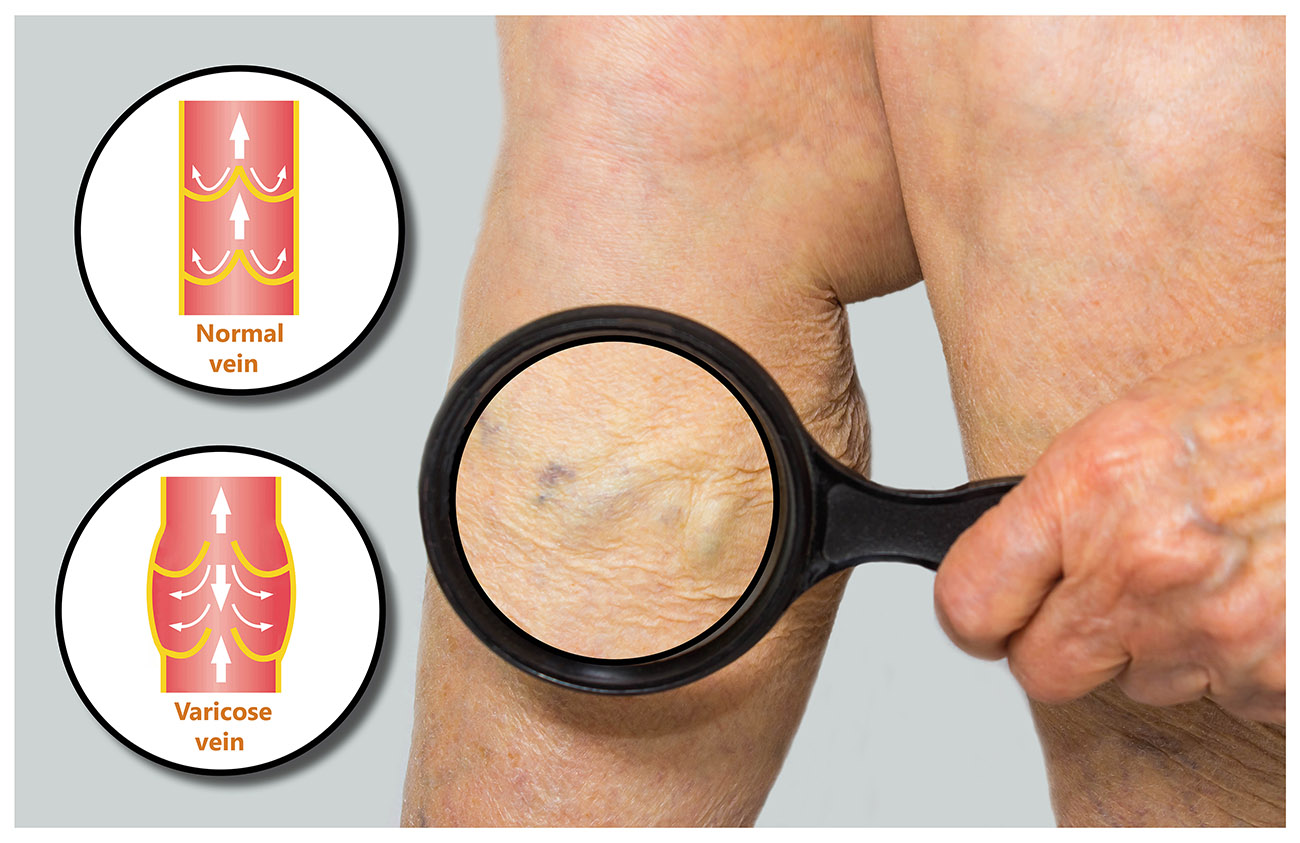What are varicose veins and spider veins?
Web@ljvascular.com2021-11-04T14:40:52-07:00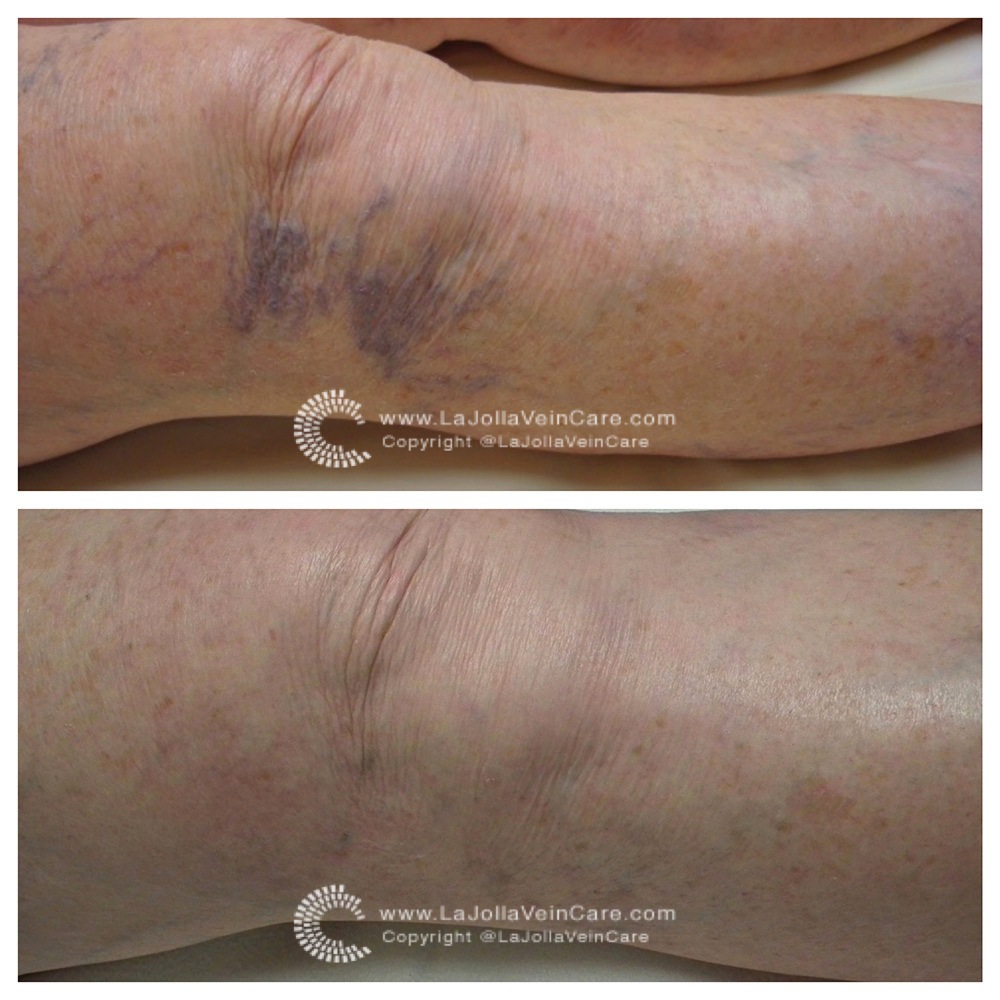
Spider veins are like varicose veins but smaller. Often, they are red or blue. They can look like tree branches or spiderwebs with their short, jagged lines. This patient had large clusters bluish colored spider veins around the knee (see top picture). These were treated with sclerotherapy injections at La Jolla Vein Care (after picture on bottom). To see how sclerotherapy works, go to La Jolla Vein Care’s Youtube channel.
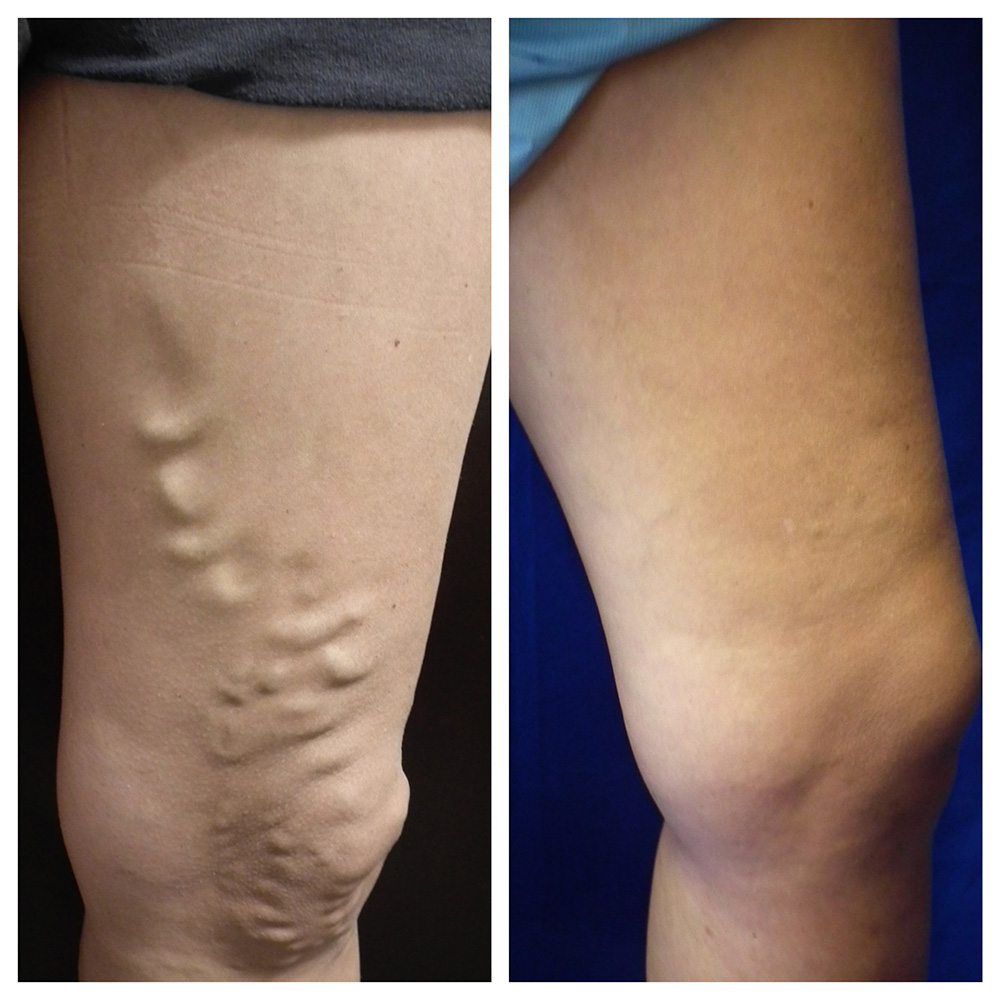
Varicose veins are bulging, twisted veins located just under the skin. This is a before and after picture of a patient who was treated at La Jolla Vein Care with radiofrequency ablation and foam sclerotherapy to dissolve the varicose veins. There are no surgical incisions with these treatments.
Varicose (VAR-i-kos) veins are enlarged veins that can be blue, red, or flesh-colored. They often look like cords and appear twisted and bulging. They can be swollen and raised above the surface of the skin. Varicose veins are often found on the thighs, backs of the calves, or the inside of the leg. During pregnancy, varicose veins can form around the vagina and buttocks.
Spider veins are like varicose veins but smaller. They also are closer to the surface of the skin than varicose veins. Often, they are red or blue. They can look like tree branches or spiderwebs with their short, jagged lines. They can be found on the legs and face and can cover either a very small or very large area of skin.



